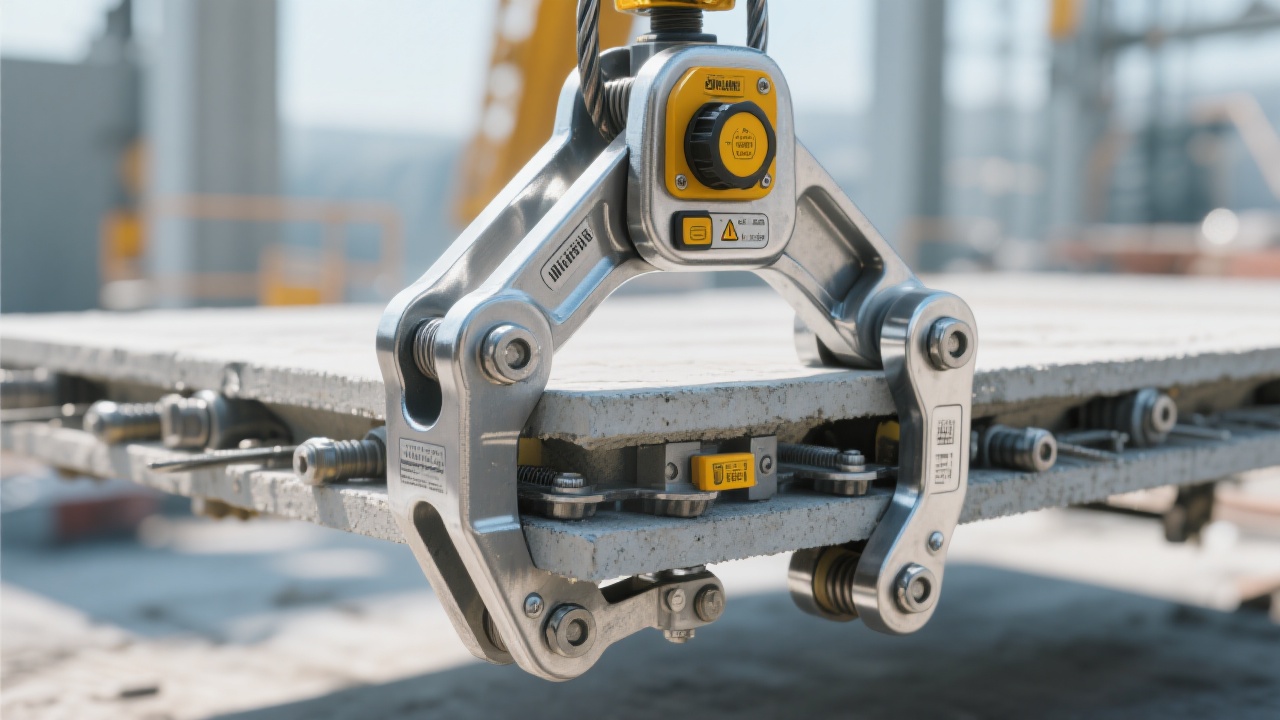
In the steel and related industries, the efficiency and safety of steel plate handling have always been key concerns for enterprises. Traditional fixtures made of ordinary steel often struggle to meet the high - demand requirements of modern logistics and manufacturing. This article aims to provide a scientific reference for enterprises in the warehousing and logistics industry when selecting fixtures by comparing the performance of high - strength alloy steel fixtures and ordinary steel fixtures.
In the past, many enterprises in the steel and warehousing logistics industries used fixtures made of ordinary steel. These fixtures, while relatively inexpensive, have significant limitations. For example, their load - bearing capacity is often limited. In a large - scale steel manufacturing plant, ordinary steel fixtures can only bear a maximum load of about 5 tons, which is far from meeting the needs of handling large - sized steel plates. Moreover, ordinary steel is prone to corrosion and wear in harsh working environments such as high - humidity warehouses and docks. Statistics show that the service life of ordinary steel fixtures is only about 2 - 3 years, and they require frequent maintenance, which not only increases maintenance costs but also affects the normal progress of operations due to downtime.

High - strength alloy steel fixtures can bear a much higher load. In practical applications, they can handle steel plates weighing up to 20 tons, which is four times that of ordinary steel fixtures. This high load - bearing capacity enables enterprises to handle large - sized steel plates more efficiently, improving the overall handling efficiency.
The corrosion and wear resistance of high - strength alloy steel fixtures are significantly better than that of ordinary steel fixtures. In a high - humidity dock environment, the surface of ordinary steel fixtures may start to rust after 3 - 6 months, while high - strength alloy steel fixtures can maintain their performance for more than 5 years. This greatly reduces the frequency of fixture replacement and maintenance costs.
High - strength alloy steel fixtures, such as the efficient steel plate grabber, are designed with an automatic opening and closing mechanism and the principle of leverage. This design allows operators to complete the grabbing and releasing of steel plates with less effort, reducing the risk of manual operation errors. In a large - scale steel warehouse, the use of this type of fixture can reduce the accident rate by more than 50%.

Let's take a look at some real - world application cases. In a large - scale steel manufacturing plant, after replacing ordinary steel fixtures with high - strength alloy steel fixtures, the handling efficiency of steel plates increased by 30%. In a hot - rolling mill, the use of high - strength alloy steel fixtures reduced the maintenance cost by 40% and the downtime by 20%. In a warehousing and logistics center and a dock, the overall productivity has been significantly improved, and the competitiveness of the enterprise in the market has also been enhanced.
| Fixture Type | Load - Bearing Capacity | Service Life | Maintenance Cost | Cost - Effectiveness |
|---|---|---|---|---|
| Ordinary Steel Fixtures | About 5 tons | 2 - 3 years | High | Low |
| High - Strength Alloy Steel Fixtures | Up to 20 tons | More than 5 years | Low | High |

In conclusion, high - strength alloy steel fixtures have obvious advantages in terms of load - bearing capacity, corrosion and wear resistance, and cost - effectiveness compared with ordinary steel fixtures. They can effectively improve the handling efficiency of enterprises, reduce maintenance costs, and enhance the competitiveness of enterprises in the market. If your enterprise is still using traditional ordinary steel fixtures and is troubled by low efficiency and high maintenance costs, it's time to upgrade your equipment. Click here to learn more about our high - strength alloy steel fixtures and take the first step towards improving your enterprise's productivity and competitiveness!

